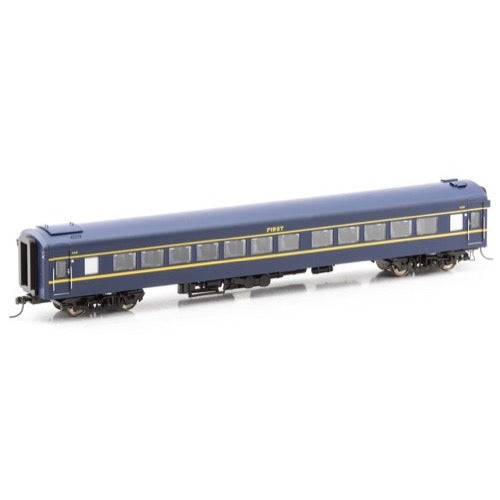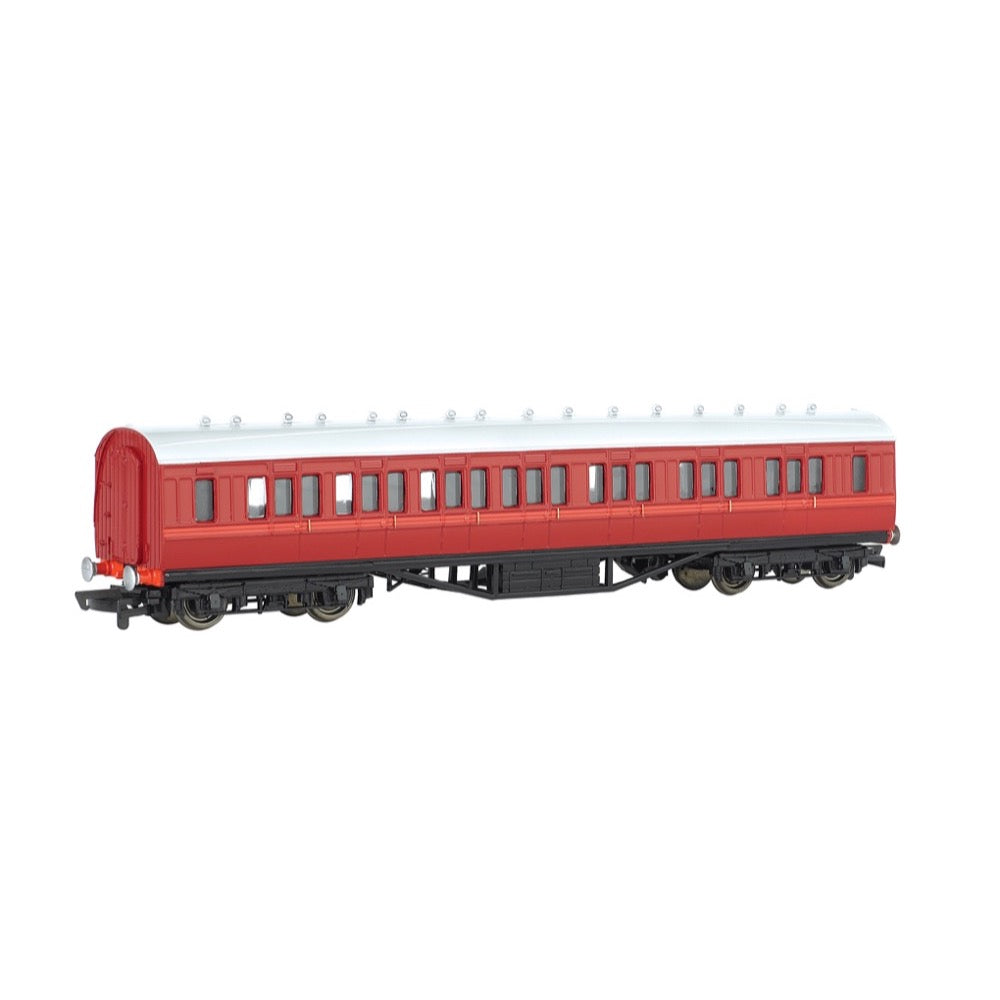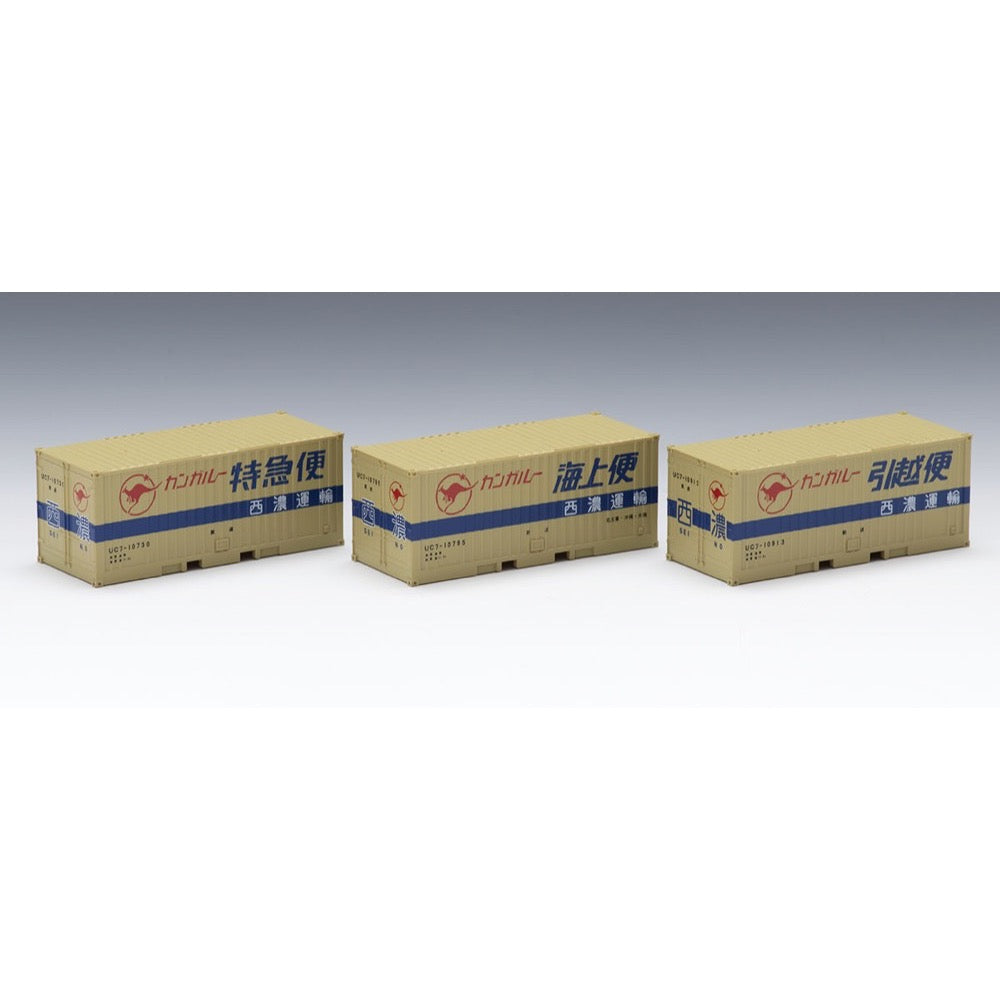
Tomix 3184 N 3184 UC7 Container Seinou Trans. Old Deco 3pcs
11.00
$
<p>The UC7 type is a privately owned container that was introduced for sea transport during the Japan National Railways era, and was used for rail transport as well as some sea routes to Okinawa and Korea.</p>
<p>Some of the UC7 types owned by Seino Transportation were in use until the 2020s.</p>
<h3>Features</h3>
<ul>
<li>Reproduces the beige base paint</li>
<li>"SEINO" logo, kangaroo mark, and numbers "UC7-10730, UC7-10795, UC7-10913" are printed</li>
<li>UC7-10730 is printed with "Kangaroo Express", UC7-10795 is printed with "Kangaroo Sea Service", and UC7-10913 is printed with "Kangaroo Moving Service"</li>
<li>Can be loaded onto Koki 50000 and various container freight cars with one touch</li>
<li>3 pieces included</li>
</ul>
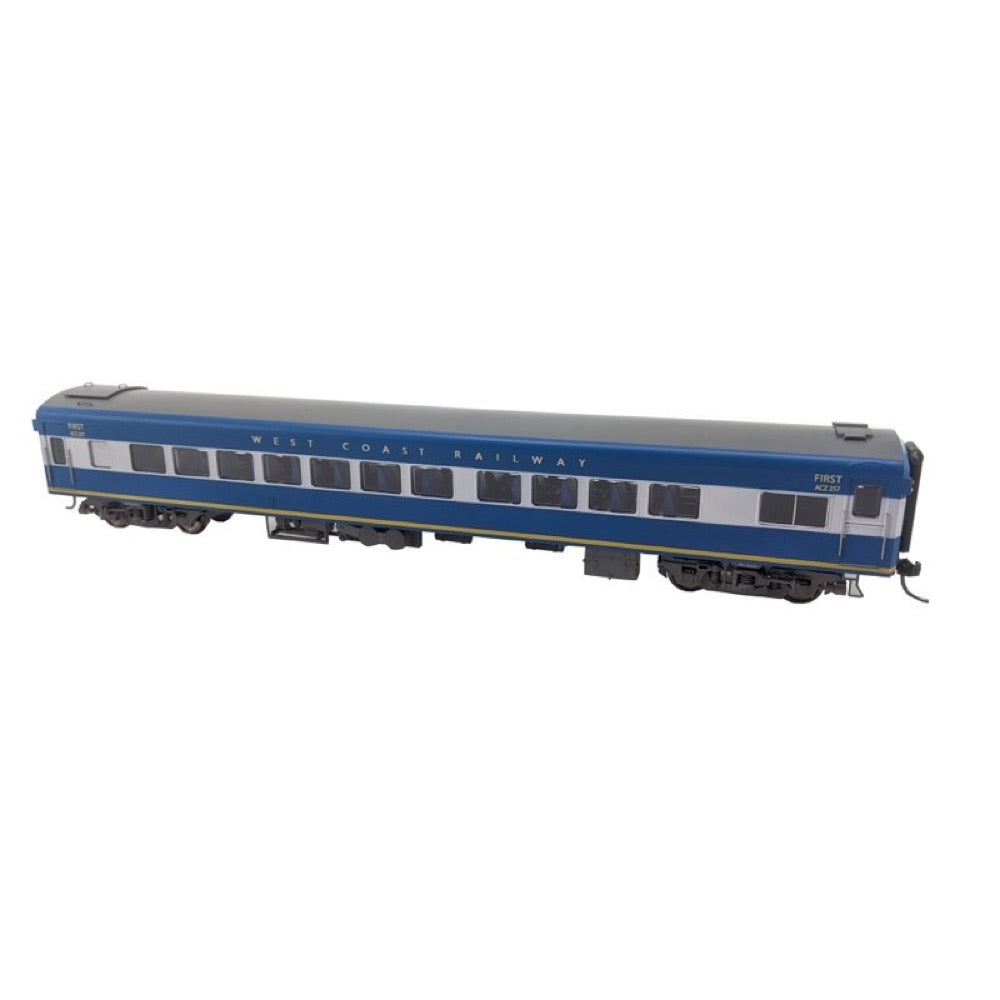
Powerline PC-522A HO ACZ 255 West Coast Railways Z Type Carriage 1st
69.00
$
<p>Powerline PC-522A HO ACZ 255 West Coast Railways Z Type Carriage 1st</p>
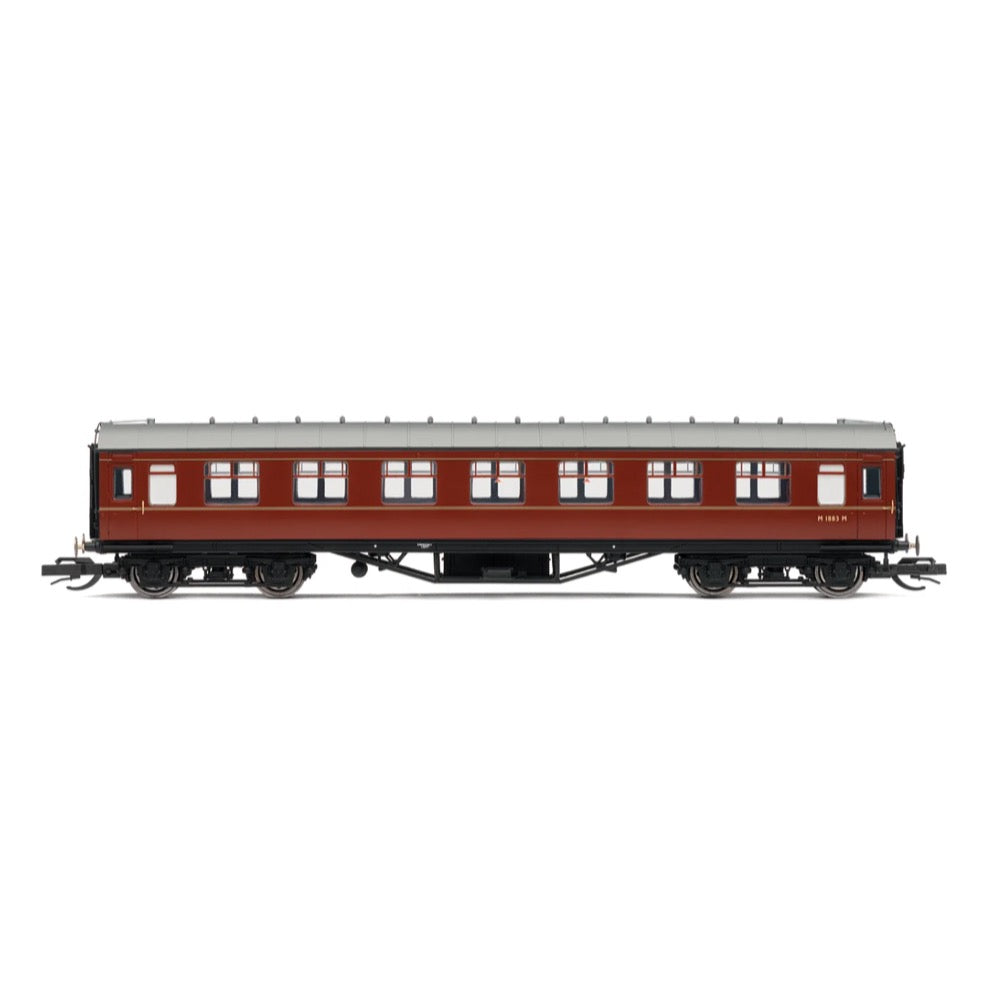
Hornby TT4033A TT BR 57 Corridor Third M1883M
27.00
$
<p>At the start of the 1930s the LMS abandoned the ‘Small Engine Policy that it had inherited from one of its largest predecessors, the Midland Railway. The abandoning of this policy led to some of the most famous Stanier and LMS designs such as the Jubilee, Black 5 and Duchess classes. To accompany this shift in ethos, new coaches were constructed for the LMS, with the 57’ coaches being built between 1931 and 1932.</p><p>These new coaches were steel clad, the first such for the LMS and had seating for 56, 300 such examples were built. In LMS service these coaches were painted in their striking maroon livery with LMS insignia adorning the side. The coaches, being relatively new at the time of nationalisation lasted well into the swansong days of BR, appearing in both its carmine and cream livery and later BR Maroon when BR decided to shift aesthetics back to regional recognition.</p><h3>Specifications</h3><ul>
<li>Item Length - Without Packaging (cm): 14.4</li>
<li>Item Height - Without Packaging (cm): 3</li>
<li>Item Width - Without Packaging (cm): 2.2</li>
<li>Item Weight - Without Packaging: 0.04</li>
<li>Item Scale: 1:120 Scale</li>
<li>Finish: Painted</li>
<li>Colour: Maroon</li>
<li>Gauge: TT</li>
<li>Operator: BR</li>
<li>Designer: Sir William Stanier</li>
<li>Livery: BR Maroon</li>
<li>Minimum Curve (mm): Radius 3</li>
<li>Number of Parts: 1</li>
</ul>

Hornby R40028 OO BR Departmental ex-Mk1 FO Brake Force Runner 3091/AD977352
37.00
$
<p>The first standardised railway carriage design built by British Railways, the Mark 1 coach introduced in 1951 could be found across Britain's railway network and continued to be produced until 1963, and even later in the form of multiple units and non-passenger stock. Along with being widely deployed, Mk1 coaches were built in various places including Derby, Doncaster, Eastleigh, Swindon, Wolverton and York.</p>
<p>Most Mk1 coaches had 63ft 5in long underframes with 64ft 6in long bodies, although some were built shorter to be used on tighter curves where large overhangs would otherwise have prohibited running. In 1977 a reduction in the number of fatalities on British railways since 1955 was attributed to the introduction of the Mk1 coaches due to their steel build, strong underframe, and buckeye couplings making them far safer in the event of an accident.</p>
<p>Mk1 coaches started to be withdrawn from widescale service in the 1990s, although in some regions, particularly in the south, Mk1 base multiple units continued to be used well into the 2000s. Network rail continue to use modified Mk1 coaches for various departmental duties and rail tour operators continue to use Mk1 coaches on specially organised services.</p>
<p>Delivered in 1959, BR coach number 3091 was converted to an MTA Brake Force Runner in 1986.</p>
<h3>Specification</h3>
<ul>
<li>Item Length - Without Packaging (cm): 26.5</li>
<li>Item Height - Without Packaging (cm): 5</li>
<li>Item Width - Without Packaging (cm): 3.5</li>
<li>Item Weight - Without Packaging: 0.14</li>
<li>Item Scale: 1:76 Scale 00 Gauge</li>
<li>License: No</li>
<li>Finish: Painted</li>
<li>Colour: Green</li>
<li>Gauge: OO</li>
<li>Operator: BR</li>
<li>Designer: BR</li>
<li>Livery: BR Olive</li>
<li>Minimum Curve (mm): Radius 2</li>
<li>Number of Parts: 1</li>
</ul>
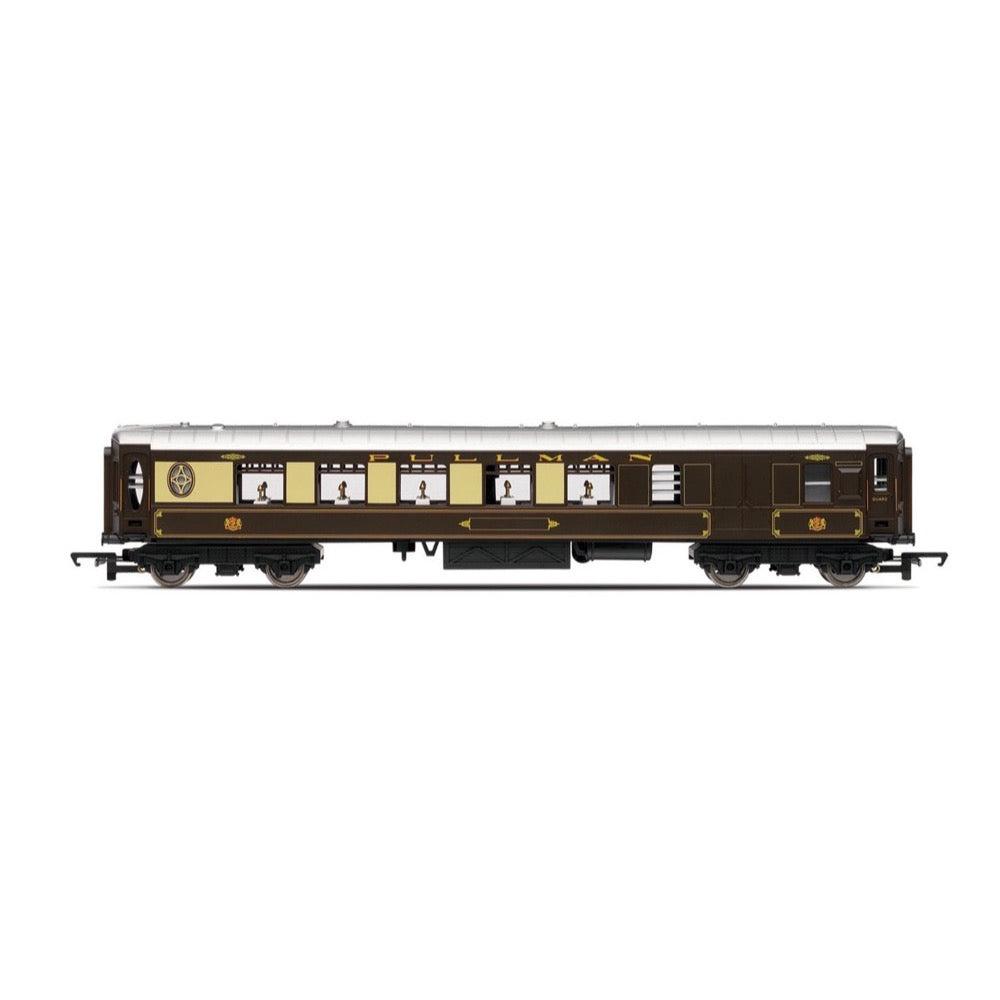
Hornby R4313 Railroad OO Pullman Brake Car
26.00
$
<p>Young or old, keen modeler or just a beginner, the Hornby RailRoad range answers the needs of many and is a perfect complement to the variety of locomotives, rolling stock, track, buildings, and accessories that can be found in the current Hornby catalogue.Devoid of easily damaged detail parts, the suitably livered RailRoad locomotives are fitted with efficient drive mechanisms and have pickups on all drive wheels ensuring smooth running. All the RailRoad models are fitted with the standard Hornby hook and bar type couplings and will therefore easily couple to those locomotives and rolling stock in both the standard Hornby and Thomas & Friends ranges. With this in mind it is easy to see that those models that make up the Hornby RailRoad range are a simple and cost effective way of adding to a train set, providing a suitable and most appropriate stepping stone into the varied and fascinating World of model railways.The introductory range offers not only a selection of individual locomotives, rolling stock and accessories but an assortment of train and wagon packs ideally suited for either train set rolling stock enhancements or for those who wish to experiment and try their hands at developing their modelling techniques!</p>
<h3>Specifications</h3>
<ul>
<li>Item Length - Without Packaging (cm): 26.3</li>
<li>Item Height - Without Packaging (cm): 5</li>
<li>Item Width - Without Packaging (cm): 3.5</li>
<li>Item Weight - Without Packaging: 0.16</li>
<li>Item Scale: 1:76 Scale 00 Gauge</li>
<li>License: No</li>
<li>Finish: Painted</li>
<li>Colour: Cream</li>
<li>Gauge: OO</li>
<li>Operator: Pullman</li>
<li>Designer: Pullman</li>
<li>Livery: Umber & Cream</li>
<li>Minimum Curve (mm): Radius 2</li>
<li>Number of Parts: 1</li>
</ul>
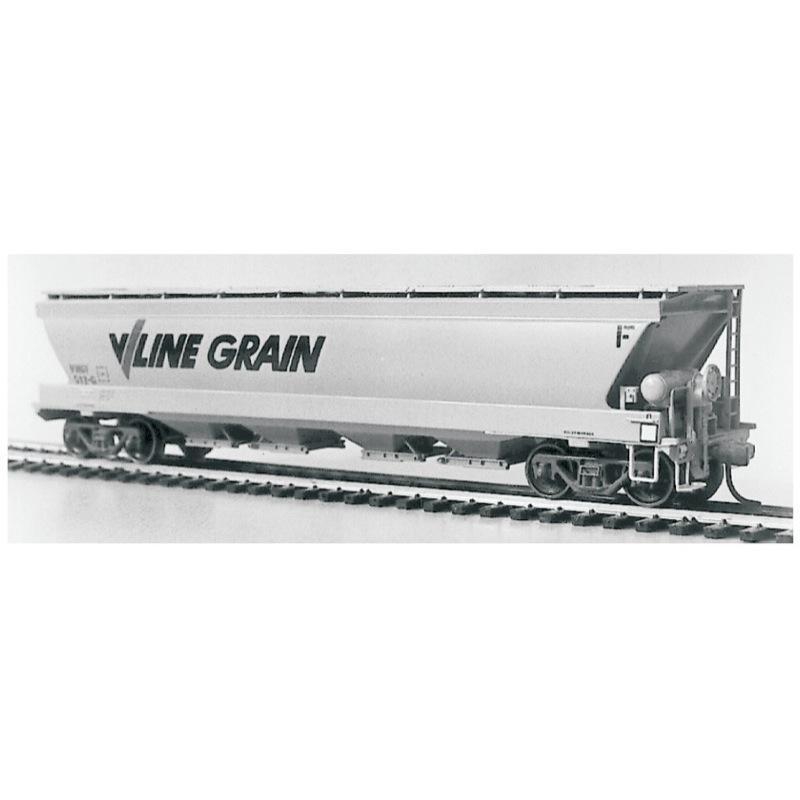
Steam Era Models R19 HO VHGF Wheat Hopper - V/Line Kit
12.00
$
<h3>V/Line VHGF Wheat Hopper Kit</h3>
<p>Tulloch Limited of Rhodes, N.S.W., constructed an initial batch of one hundred aluminium wheat hopper wagons in 1966. These wagons bore code/numbers GJX 1 to 20 and GJF 21 to 100. A similar design, but featuring steel construction, was prepared and one hundred steel hoppers were constructed in 1968/69 by Steelweld of Victoria. These wagons continued the GJF code, being numbered 101 to 200. Further GJF wagons were fabricated in steel at Newport and Ballarat Workshops which extended the number series. The various batches of steel hoppers varied in details such as type and arrangement of brake equipment, including hand brake, filling hatches, discharge outlets, walkways and sidesill cross section. This kit is representative of wagon numbers 381 to 635 constructed from 1984 to 1987 at Ballarat Workshops. These wagons were originally coded VHGY but were changed to VHGF in more recent years.</p>
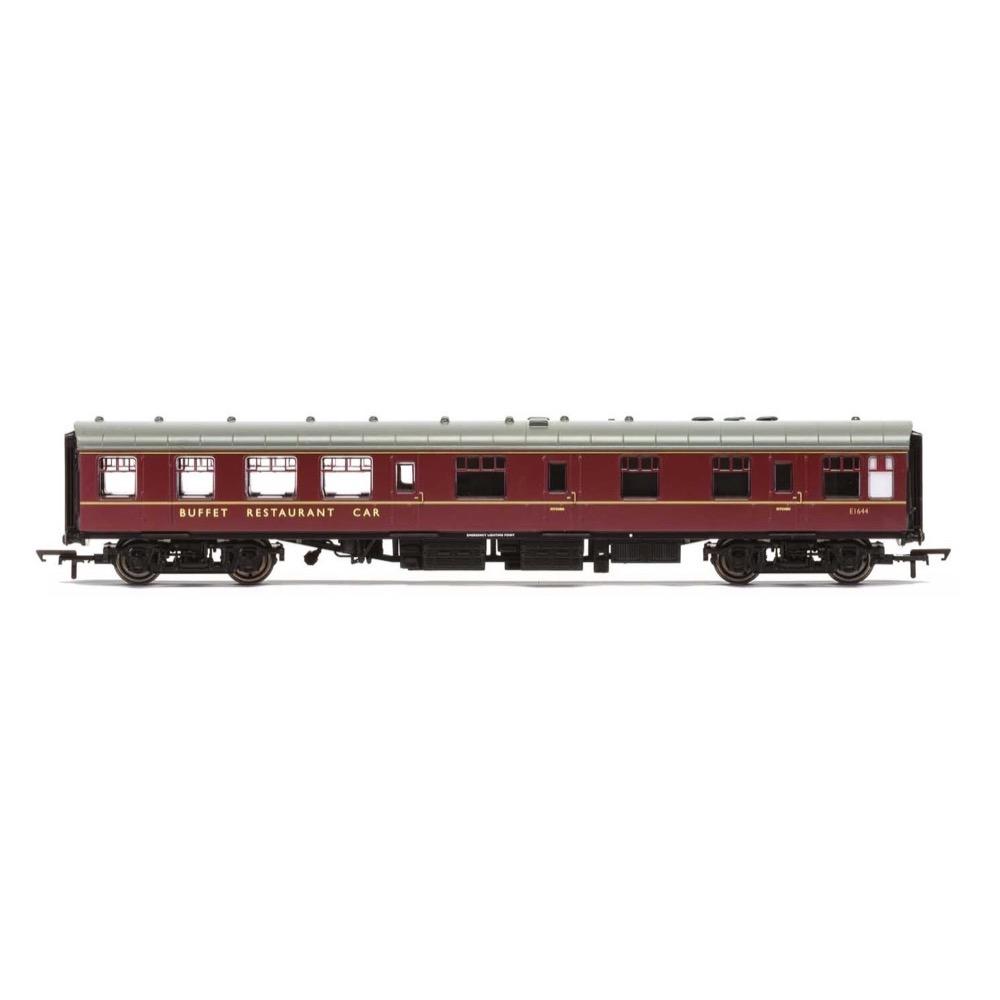
Hornby R40026 OO BR Mk1 Restaurant Buffet E1664
37.00
$
<p>The first standardised railway carriage design built by British Railways, the Mark 1 coach introduced in 1951 could be found across Britain's railway network and continued to be produced until 1963, and even later in the form of multiple units and non-passenger stock. Along with being widely deployed, Mk1 coaches were built in various places including Derby, Doncaster, Eastleigh, Swindon, Wolverton and York.</p>
<p>Most Mk1 coaches had 63ft 5in long underframes with 64ft 6in long bodies, although some were built shorter to be used on tighter curves where large overhangs would otherwise have prohibited running. In 1977 a reduction in the number of fatalities on British railways since 1955 was attributed to the introduction of the Mk1 coaches due to their steel build, strong underframe, and buckeye couplings making them far safer in the event of an accident.</p>
<p>Mk1 coaches started to be withdrawn from widescale service in the 1990s, although in some regions, particularly in the south, Mk1 base multiple units continued to be used well into the 2000s. Network rail continue to use modified Mk1 coaches for various departmental duties and rail tour operators continue to use Mk1 coaches on specially organised services.</p>
<p>The Mk1 RB is a Mk1 Restaurant Buffet coach containing a kitchen and a serving buffet counter. As well as these features the coach would also feature seating, usually with a capacity of 23 passengers. The first phase of building British Railways' Mk1 catering vehicles followed the traditional pattern of dining that had been catered for since Edwardian times, with large Kitchen Cars preparing multiple course dining for consumption in both First and Third Class Dining Cars. However, during the early 1950s it became apparent that social patterns regarding rail travel catering were changing, a direct consequence of WWII attitudes towards dining.</p>
<p>The catering department of British Railways was experiencing a demand from travellers for cheaper and lighter meals and was seeing an increase in social drinking that was not related to dining. This change in dining patterns meant that the use of a Buffet vehicle, rather than a full Kitchen Car/Dining Car combination, was sometimes a better option and the third phase 1957-62 Mk.1 building programme provided many of BR's vehicles with buffet facilities, not just in addition to full meal provision, but also replacing it. Propane gas units were used for gas cooking, reducing the reliance on electric power which, in turn, allowed for a smaller dynamo and battery.</p>
<h3>Specification</h3>
<ul>
<li>Item Length - Without Packaging (cm): 26.5</li>
<li>Item Height - Without Packaging (cm): 5</li>
<li>Item Width - Without Packaging (cm): 3.5</li>
<li>Item Weight - Without Packaging: 0.14</li>
<li>Item Scale: 1:76 Scale 00 Gauge</li>
<li>License: No</li>
<li>Finish: Painted</li>
<li>Colour: Red</li>
<li>Gauge: OO</li>
<li>Operator: BR</li>
<li>Designer: BR</li>
<li>Livery: BR Maroon</li>
<li>Minimum Curve (mm): Radius 2</li>
<li>Number of Parts: 1</li>
</ul>
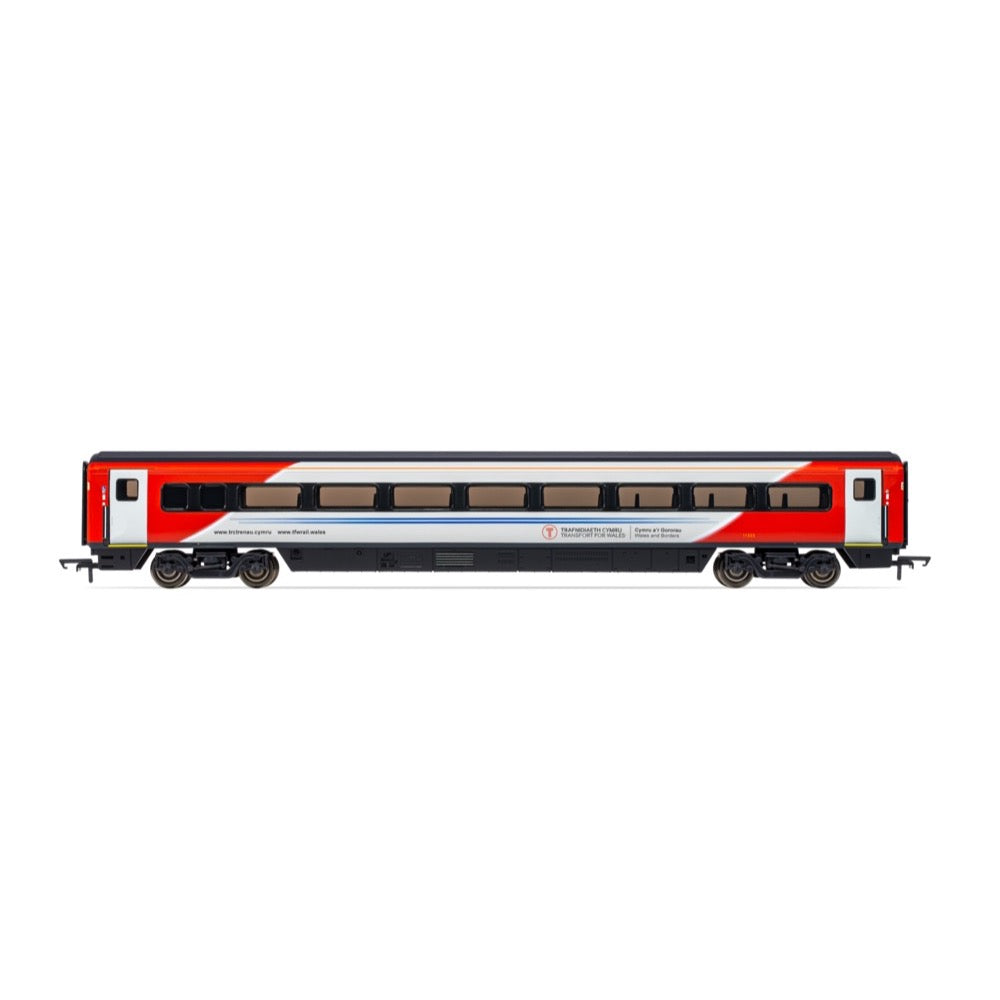
Hornby R40185A OO Transport for Wales Mk4 Open First (Accessible Toilet) 11323
40.00
$
<p>Built at Metro-Cammell's Washwood Heath factory, 314 Mk4 coaches were produced between 1989 and 1992. They were built specifically for use on the newly electrified East Coast Main Line, along with hopes that a second order for the West Coast Main Line would be placed at a later date, although this second order never transpired. Mk4 coaches featured many improvements over the Mk3s such as push-button operated plug-type doors, fully sealed gangways and a designed top speed of 140mph. Much of the Mk4 design was based upon the Advanced Passenger Train. In particular, Mk4 coaches feature sides profiled to allow a tilt of up to 6° with newly fitted tilting bogies.</p>
<p>Mk4s entered service in 1989 and helped drive a significant increase in passenger traffic. With privatisation in 1996, all Mk4 coaches were sold to Evershot Rail Group who have since leased them out to the holder of the InterCity East Coast Franchise. The franchise was initially awarded to Great North Eastern Railway (GNER) and has since been operated by National Express East Coast, East Coast, Virgin Trains East Coast and London North Eastern Railway (LNER) owned by the Department for Transport.</p>
<p>Between October 2003 and November 2005 Bombardier Transportation, under contract from GNER, commenced refurbishment of the Mk4 stock, fitting new seating arrangements and introduced onboard Wi-Fi, a first for British rail services. This refurbishment programme was called 'Project Mallard' named after the Mallard steam locomotive, built in the 1930s by the London & North Eastern Railway and holder of the world speed record for steam locomotives.</p>
<p>Although Mk4 coaches have spent most of their lives on the ECML, there are plans to cascade them down to other lines due to the introduction of the Class 800 and Class 801 IEPs.</p>
<h3>Specification</h3>
<ul>
<li>Item Length - Without Packaging (cm): 33</li>
<li>Item Height - Without Packaging (cm): 5</li>
<li>Item Width - Without Packaging (cm): 3.5</li>
<li>Item Weight - Without Packaging: 0.2</li>
<li>Item Scale: 1:76 Scale 00 Gauge</li>
<li>License: No</li>
<li>Finish: Painted</li>
<li>Colour: Grey</li>
<li>Gauge: OO</li>
<li>Operator: Transport for Wales</li>
<li>Designer: Met Cam</li>
<li>Livery: Transport for Wales</li>
<li>Minimum Curve (mm): Radius 3</li>
<li>Number of Parts: 1</li>
</ul>

Hornby R40054A OO LMS Stanier D1912 Coronation Scot 50ft RK 30089
50.00
$
<p>In response to the LNER's 'Coronation' sets the LMS Board announced the advent of a similar train, the 'Coronation Scot'. All of the 'Coronation Scot' Coaches were eventually scrapped, beginning from withdrawals in 1962, with the exception of two of the RK vehicles; 30088 and 30106. These two coaches were converted into Inspection Saloons and both survive to this day as preserved examples.</p>
<h3>Specification</h3>
<ul>
<li>Item Length - Without Packaging (cm): 22.8</li>
<li>Item Height - Without Packaging (cm): 5</li>
<li>Item Width - Without Packaging (cm): 3.5</li>
<li>Item Weight - Without Packaging: 0.13</li>
<li>Item Scale: 1:76 Scale 00 Gauge</li>
<li>Finish: Painted</li>
<li>Colour: Blue</li>
<li>Operator: LMS</li>
<li>Designer: Sir William Stanier</li>
<li>Livery: Coronation Scot</li>
<li>Minimum Curve (mm): Radius 2</li>
<li>Number of Parts: 1</li>
</ul>
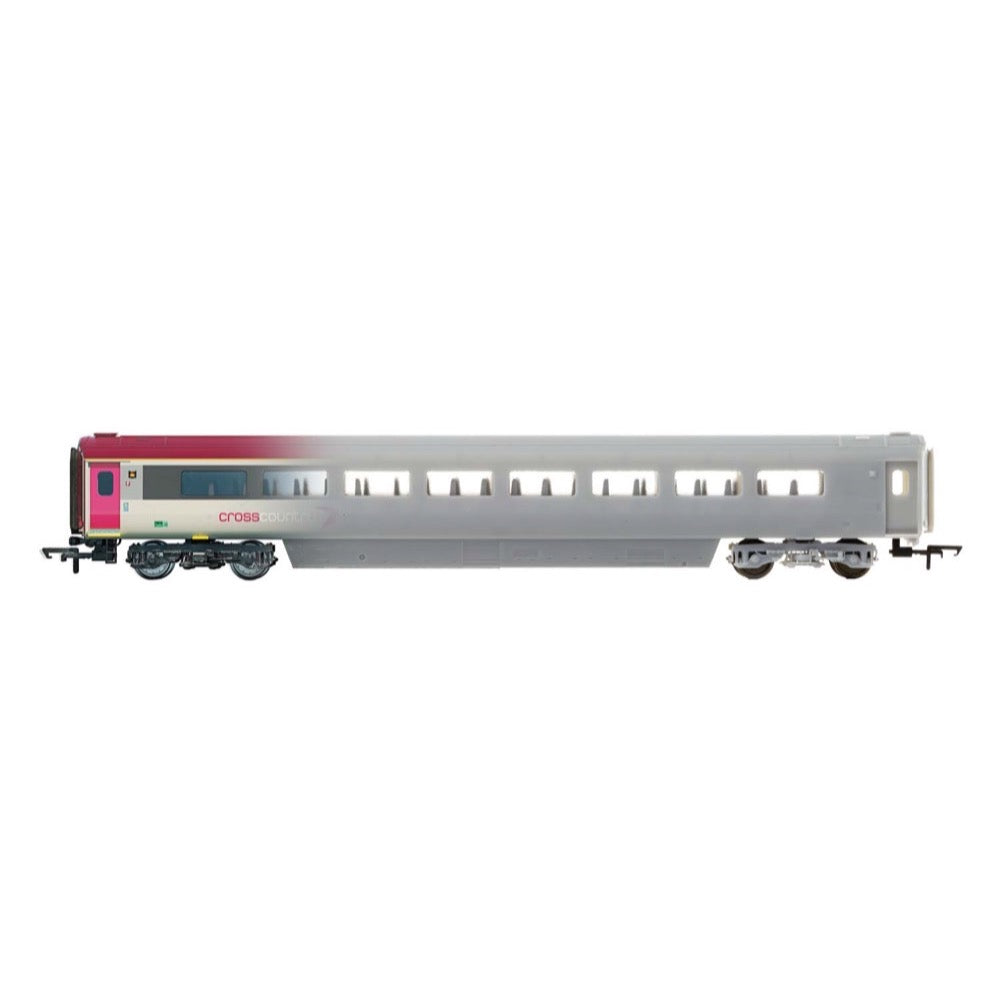
Hornby R4940E Cross Country Trains Mk3 Sliding Door TS - Era 11
25.00
$
<p>Hornby R4940E Cross Country Trains Mk3 Sliding Door TS</p>
<h3>Specifications</h3>
<ul>
<li>Length: 303mm</li>
<li>Period: Era 11 (2014 +)</li>
<li>Operator/Livery: Cross Country, Purple/Grey</li>
<li>Designer: Wabtec Doncaster</li>
</ul>


